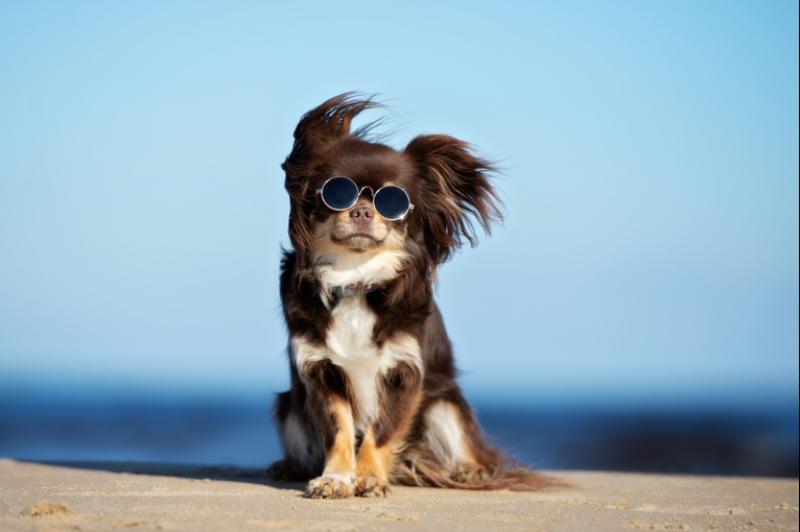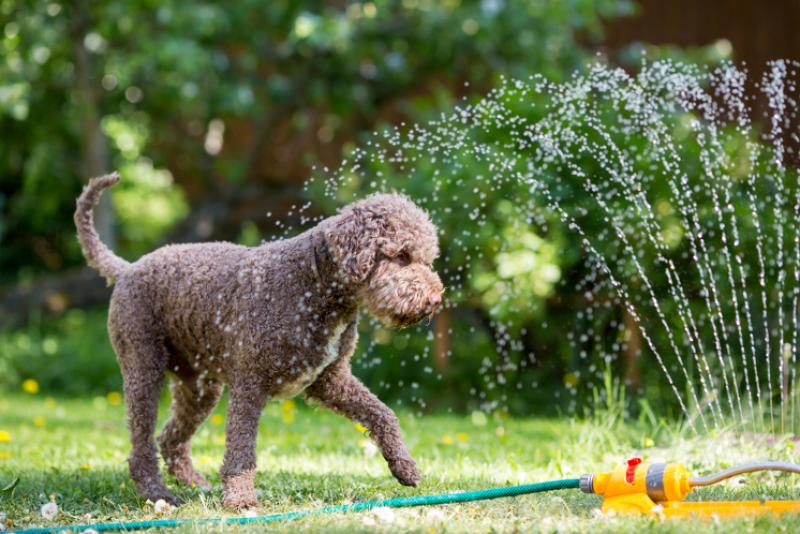8 Tips for Keeping Your Dog Safe and Happy in Hot Temperatures
As summer begins and the temperatures rise, many dog owners are understandably concerned about keeping their dogs safe in hotter temperatures. Unfortunately, dogs are susceptible to heat since they can’t sweat, so dog parents need to be extra vigilant about keeping them cool on hot days. Here are eight tips to keep your dog safe, happy, and healthy in hot temperatures:
Never leave them in a parked car.
You should never, ever leave your dog in a parked car — even with the windows cracked and the air conditioning running, even if you’re just running inside really quick to grab collagen chews for dogs. Your car traps hot air due to the greenhouse effect, and the temperature will rapidly rise past the external temperature. According to figures from ASPCA, on an 85-degree day, your car’s interior temperature can reach 102 degrees within just 10 minutes — and it can get up to 120 degrees within just 30 minutes. These temperatures are hot enough to cause organ damage or even kill your beloved pet outright, so either leave them at home or take them into the store with you — no exceptions.
Know the signs of dehydration.
Dogs can suffer from dehydration just like humans, but the warning signs present a little differently. When dogs are dehydrated, they become lethargic and depressed, and you will also notice sunken eyes, dry mouth, and a loss of skin elasticity. If they are dehydrated, make clean cool water easy to reach and try to entice them to drink by adding some ice chips or chicken broth to it. If they won’t drink, you may need to take them to the vet for an IV drip.

Source: otsphoto / Shutterstock.com
Watch out for heat stroke.
Heat stroke is a life-threatening condition that occurs when the body cannot cool itself down. Signs of heat stroke in dogs include rapid breathing, excessive or thickened saliva, fatigue, depression, muscle tremors, staggering, and a raised body temperature above the normal baseline of 101.5 degrees Fahrenheit. Immediately move your dog inside and wrap them in cool, wet towels, concentrating on the underarm, belly, and groin areas. Running a fan may also help speed up your cooling efforts. Do this until your dog’s body temperature comes down to 103 degrees Fahrenheit and call your vet to see what other steps you need to take.
Understand how the heat affects them.
Certain dogs are more susceptible to heat than others. Brachycephalic breeds that have a flat head and shorter nasal passages have difficulty cooling themselves off through panting. Younger, older and/or overweight dogs are also more susceptible to overheating, as are dogs with certain medical conditions. If your dog falls into any of these vulnerable groups, be extra vigilant about keeping them cool as the summer heat ramps up.

Source: Jne Valokuvaus / Shutterstock.com
Limit time outside on hot days.
On hot days, keep your dog inside the house and only exercise them during the cooler hours of the early morning or late evening. Asphalt and pavement can get hot enough to burn your dog’s feet, so if it’s too hot for you to walk around barefoot, then confine them to the grass to avoid hurting their feet. You can also try putting non-slip booties on their feet, but not every dog likes wearing shoes, so this may not be an option for you. Always carry water and a portable dog water bottle with you so they don’t become dehydrated.
Help them stay cool inside and out.
Dogs don’t sweat, so they need different methods to keep them cool than humans do. Always make sure that they have plenty of cool and clean drinking water, and if you have a yard, you can provide a kiddie pool with a shallow layer of water for them to cool off in. If the kiddie pool isn’t an option, they may enjoy lying on a wet towel or a frozen ice pack to cool off. If your yard doesn’t have enough shade, then put up a puppy tent or a canopy to create a cool spot where they can lie on the grass. Your dog might also enjoy homemade frozen treats. Just make sure the ingredients are dog-safe before giving it to them! Don’t shave their coats, which can cause them to become sunburned and actually remove some of their natural insulation that protects them from temperature changes.
Source: Jaromir Chalabala / Shutterstock.com
Don’t leave them unsupervised around water.
Many dogs love to cool off by going for a swim, but this doesn’t mean that they can be left unattended at the lake, pool, or pond. Always keep an eye on your dog and call them out of the water before they can become exhausted. We recommend putting your dog in a canine life vest to help protect them from accidental drowning. Try to stop them from drinking too much water, which can contain germs, chemicals, and other compounds that irritate their stomach. When you get home, rinse them off and clean out their paws, and give them a bath if necessary. Reward them with a bully stick for dogs afterward.
Keep them away from potential toxins.
Sunscreen and bug spray designed for humans may be beneficial for you, but they are toxic to animals, so keep them away from your dogs. Many lawn and garden chemicals, including insecticides and rodenticides, are also harmful to pets, so they need to be locked up out of their reach. Keep your dog away from lawns, gardens, and other treated areas to avoid contamination. You should also be cautious at barbecues, picnics, festivals, and other events that may serve food and drinks that could be potentially harmful to your dog. Instead, bring along their own food and natural dog treats so they can still eat safely, or feed them before you leave.
We hope this guide helped you feel more prepared for taking care of your dog in the hotter summer months. And remember — Don’t hesitate to reach out to your vet if you think your dog is dehydrated or has suffered a heat stroke!
More to Read:
Previous Posts:



